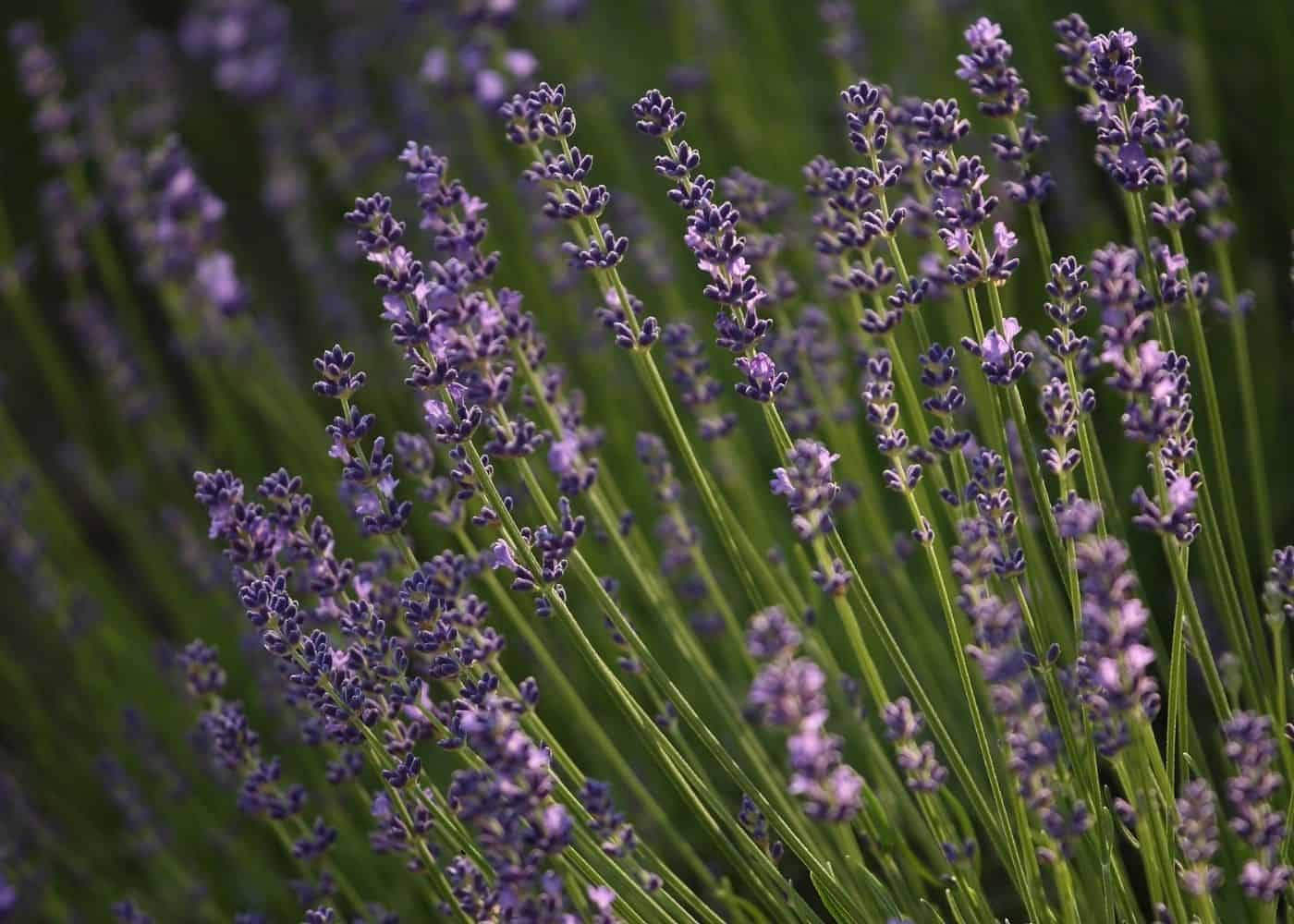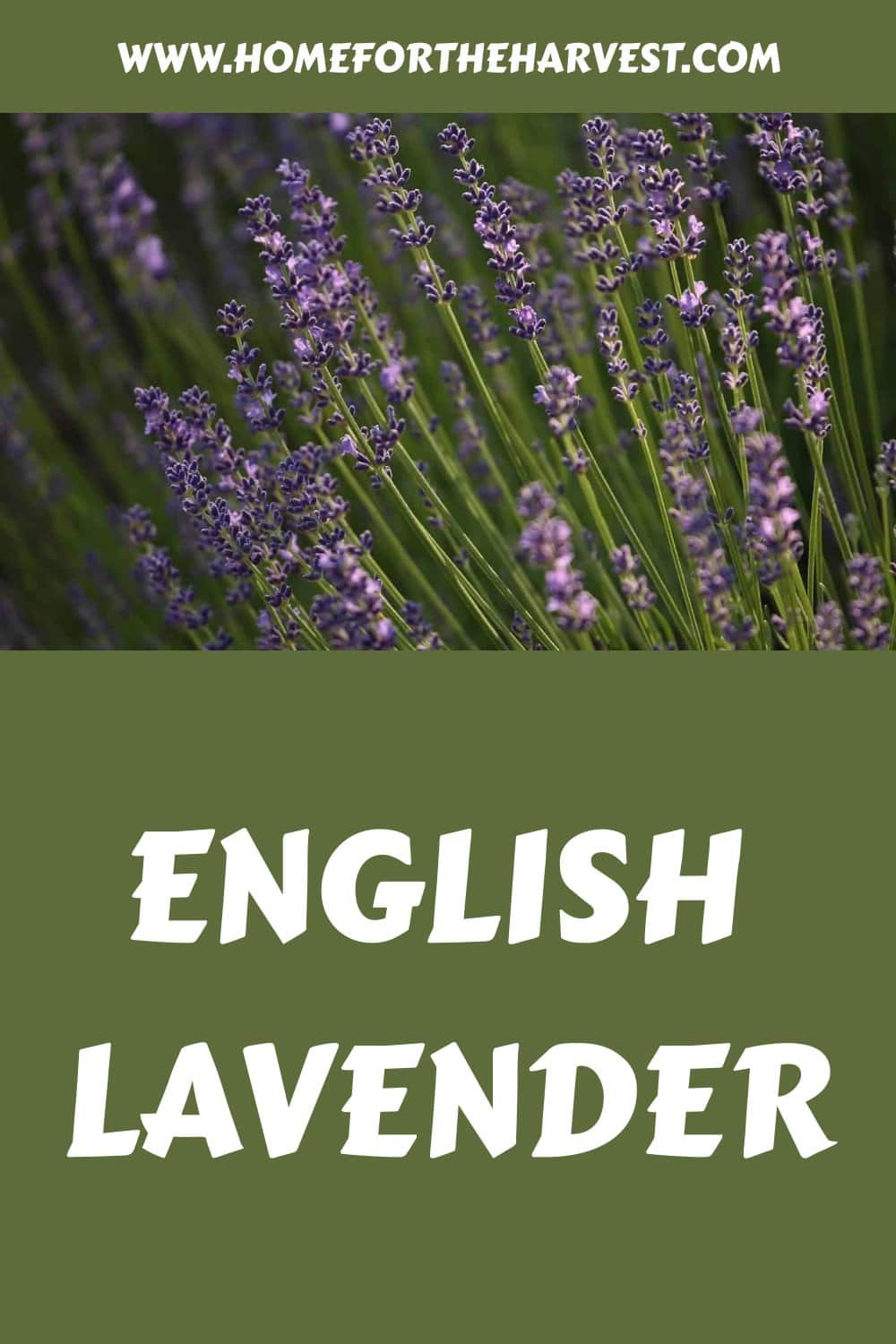English lavender (Lavandula angustifolia) is a short shrub with spikes of purple flowers that typically bloom in early-mid summer. English lavender is native to the Mediterranean but is more cold-hardy than other popular types of lavender. It is known for being the finest type of lavender for scent and culinary applications. English lavender requires annual pruning in the garden, but this work tends to be worth it for the beautiful flowers.
English lavender basics
English lavender (Lavandula angustifolia) is a flowering subshrub native to the Mediterranean. English lavender is known for its sweet floral scent, culinary suitability, and high-quality lavender oil. Other common names for English lavender (Lavandula angustifolia) include common lavender, garden lavender, Bulgarian lavender, narrow-leaved lavender, and fine lavender.
“The flowers do not produce as much oil as other types, but the quality is far superior. The bright blue flowers and buds are dried for their decorative uses, and the fragrant oil has many uses in the kitchen and beyond.”
Lavender: Growing & Using Lavender for Fragrance, Mood & Body Care, by Jessie Hawkins
English lavender plants are generally quite hardy in the garden. They thrive in well-drained soil and full sun planting locations. English lavender tends to grow best in climates with wet winters and dry, hot summers. The plants have grey-green foliage and bloom in early-mid summer (typically June or July) over a period of about 3-4 weeks.
Lavender is a suitable plant for both ornamental flower gardens and for herb gardens. English lavender can also be grown indoors as a lavender tree topiary (although these plants are harder to find than Spanish lavender in tree form).
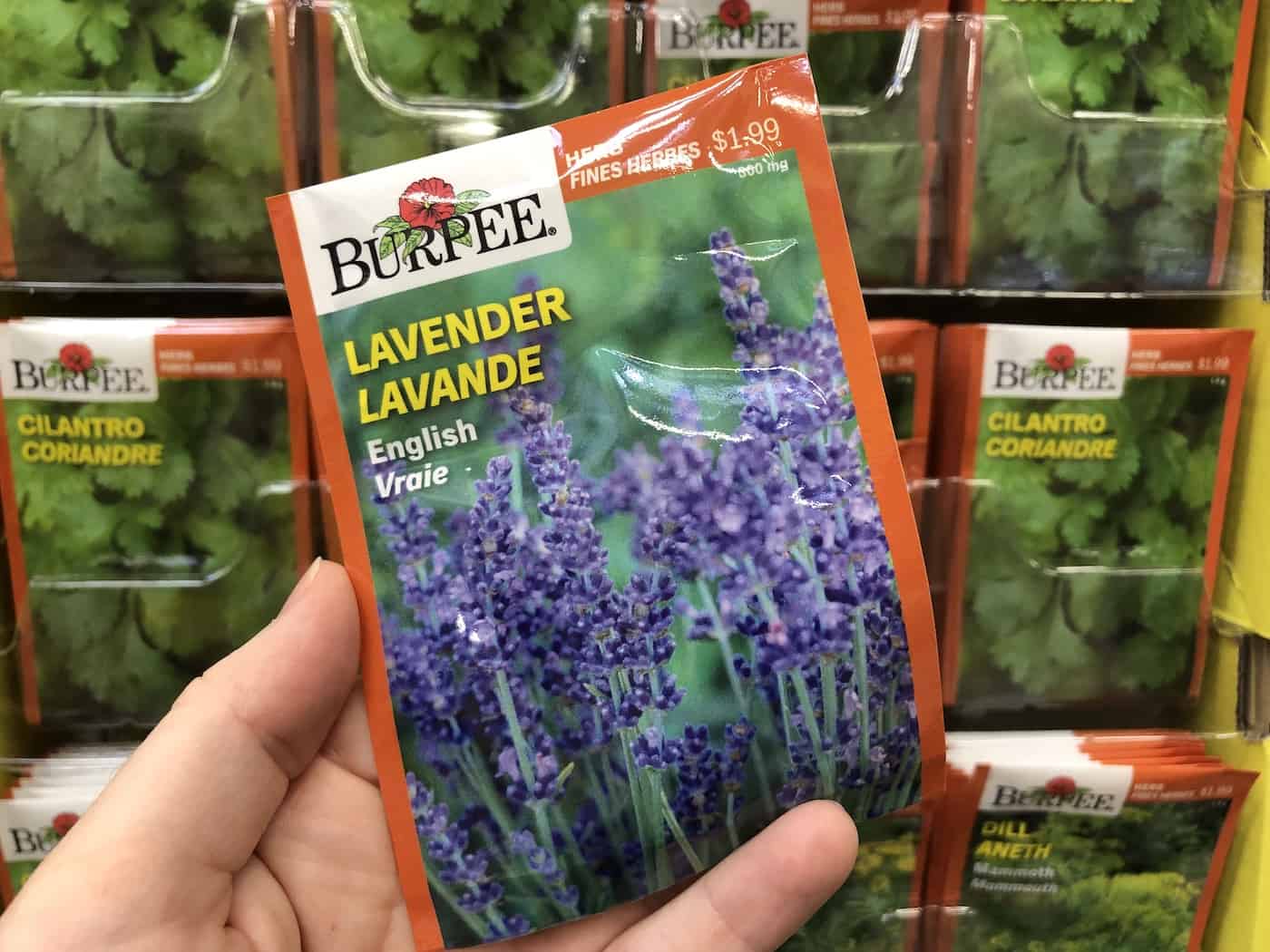
English lavender vs. French lavender
English lavender (Lavandula angustifolia) is a different species of lavender than French lavender (Lavandula dentata). That said, both English lavender (Lavandula angustifolia) and French lavender (Lavandula dentata) are native to France. English lavender (Lavandula angustifolia) is native to high-altitude areas in the South of France, as well as parts of Spain and Italy.
English lavender is not native to England. It is thought that Lavandula angustifolia was potentially introduced to England by the Romans. While English lavender is not native to England, it is much more cold-hardy than other types of lavender (such as French lavender) and is generally better suited to the cooler British climate.
English lavender (Lavandula angustifolia) is extensively cultivated in the Mediterranean, including in the famous lavender fields of Provence, France. English lavender tends to be high more highly scented than French lavender and is preferred for culinary applications, scents/perfumes, and lavender essential oil. Authentic French lavender honey is produced by bees feeding on Lavandula angustifolia (English Lavender) and its hybrids.
“Portuguese lavender honeys are generated from the nectar of Lavandula stoechas, whereas French lavender honeys are exclusively derived from Lavandula angustifolia, Lavandula latifolia, or hybrids of these two species.”
Floral quality and discrimination of Lavandula stoechas, Lavandula angustifolia, and Lavandula angustifolialatifolia honeys, by Guyot-Declerck et al., Universite´ catholique de Louvain
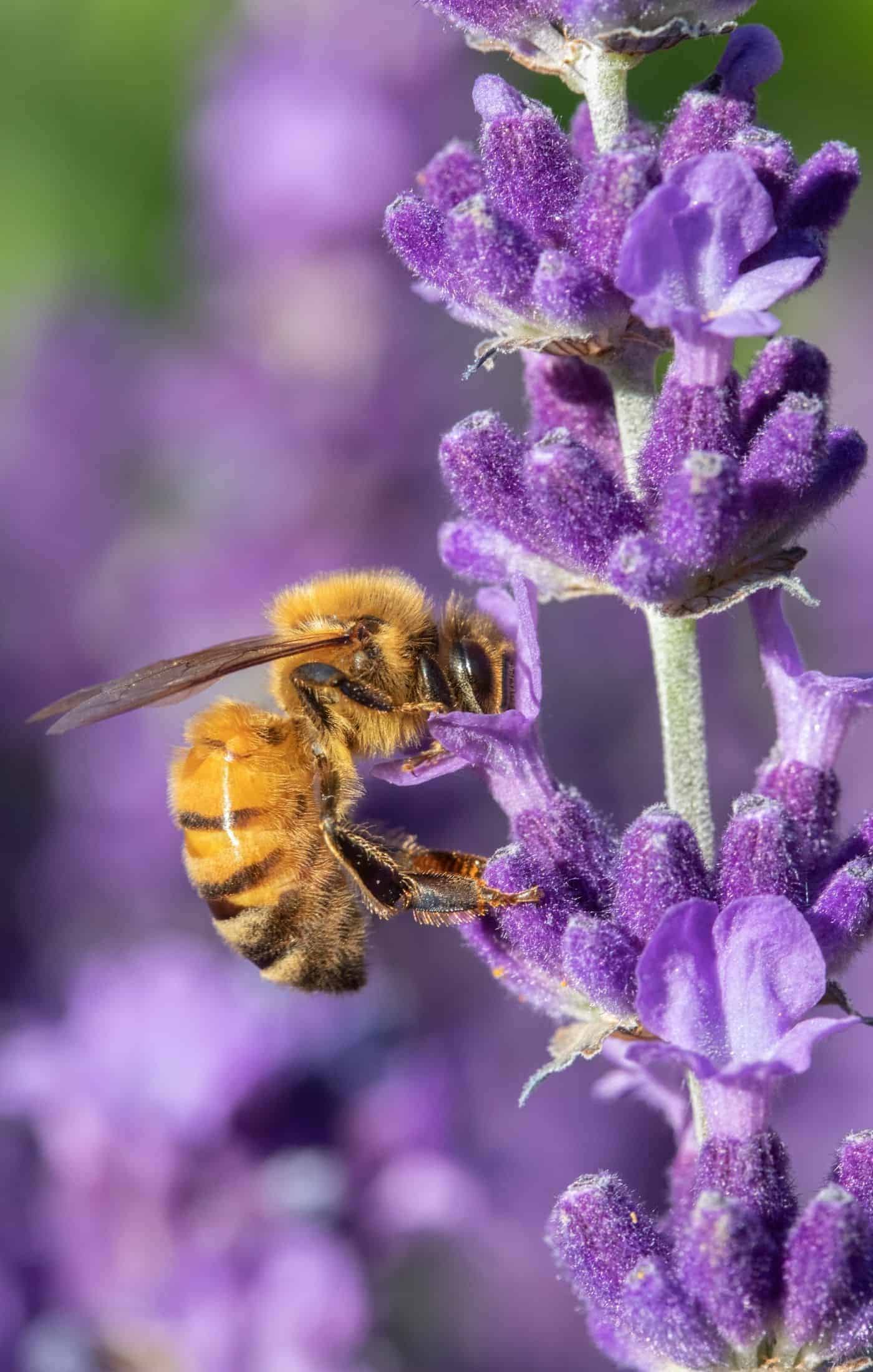
English lavender varieties
There are many excellent varieties (cultivars) of English lavender available. Here are some of the most popular varieties of English lavender to grow in your garden:
- Hidcote lavender
- Munstead lavender
- SuperBlue lavender
- Royal Velvet lavender
- Melissa lavender
- Buena Vista lavender
- Violet Intrigue lavender
- Blue Cushion lavender
- Miss Katherine lavender
- Nana Alba lavender
- Imperial Gem lavender
- Thumbelina Leigh lavender
- Rosea lavender
- Hidcote Pink lavender
- Loddon Blue lavender
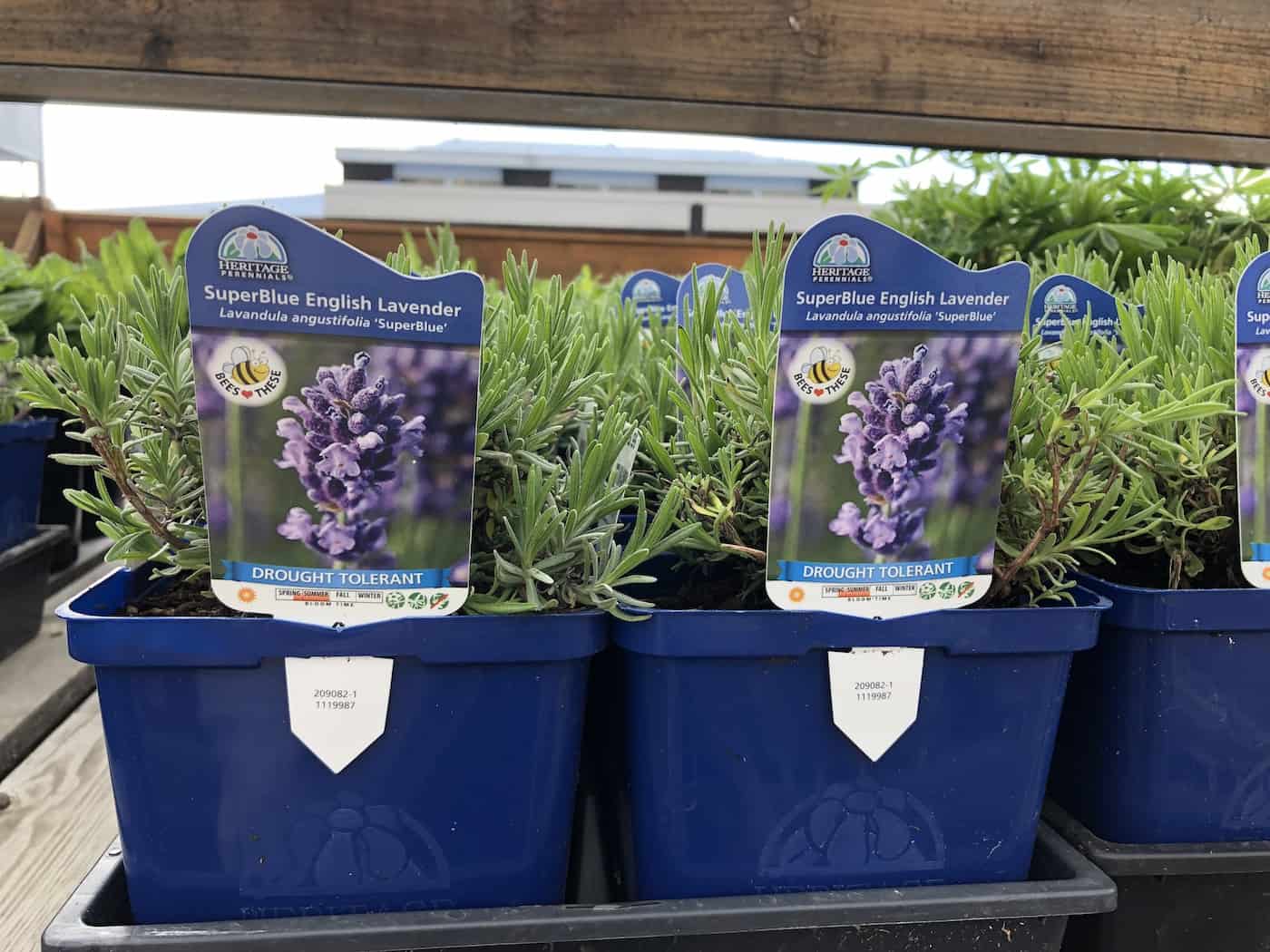
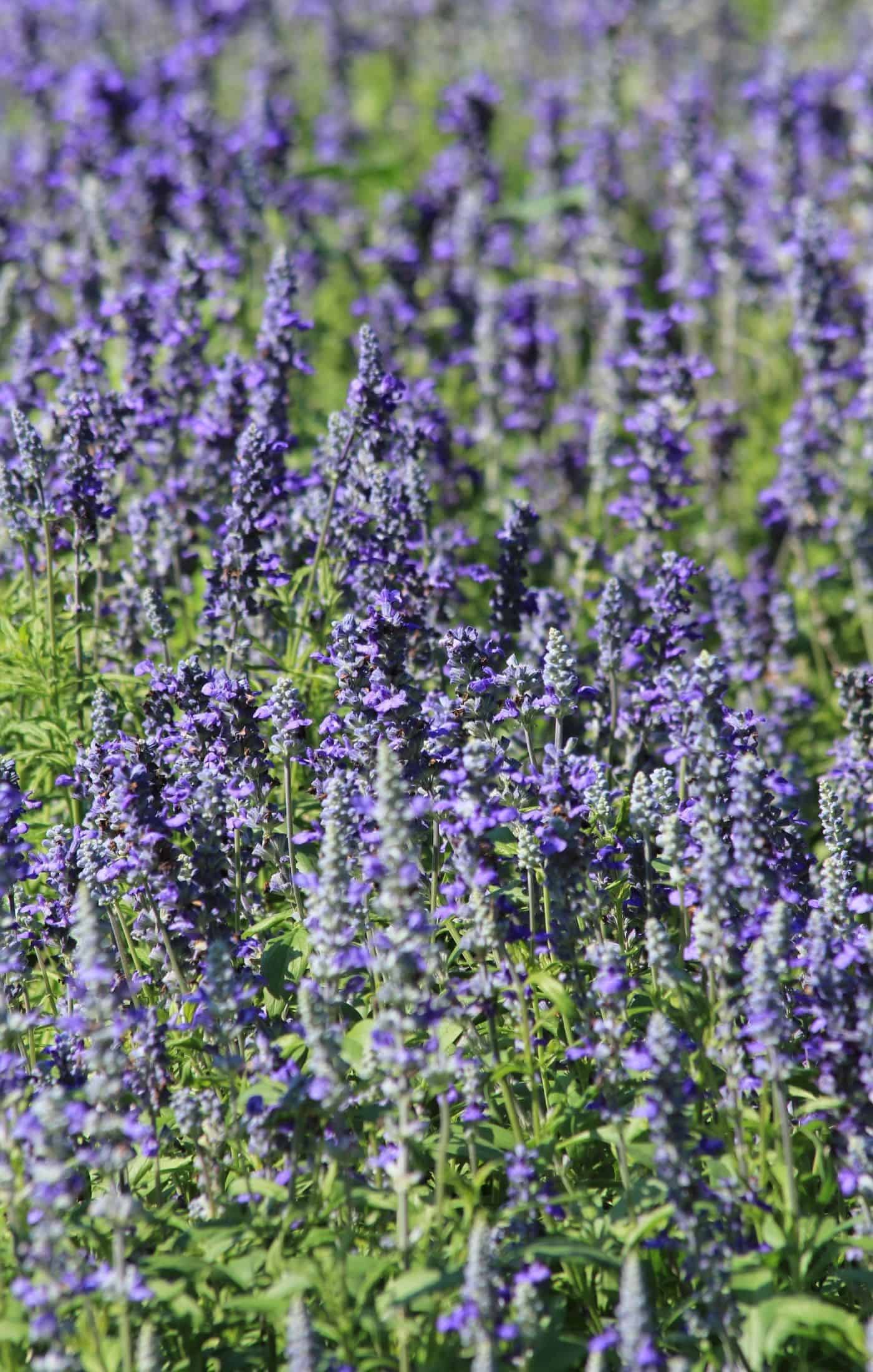
English lavender plant care
English lavender is a Mediterranean subshrub that thrives in sunny locations with well-drained soil. These plants are tolerant of different soil types and tend to grow best where winters are wet, but summers are relatively dry. English lavender is often planted in border gardens along with flowering perennials or along pathways. Most varieties of English lavender grow best in Zones 5-9.
“The two basic requirements for successful lavender growing are full sun and good drainage.”
Lavender: The Grower’s Guide, by Virginia McNaughton
Sunlight requirements for English lavender
English lavender should be grown in a full-sun location where the leaves receive at least 6-8 hours of sunlight per day. Lavender does not thrive in shady areas and requires lots of sunlight to produce the masses of scented flowers that English lavender is famous for.
Garden soil for English lavender
Lavender grows best in light, well-drained soils. This includes sandy loam or gritty soil that drains excess water easily. Lavender plants can typically only withstand ponded water for short periods of time, and do not like to have “wet feet”. Lavender plants are tolerant of a range of soil acidity values but tend to grow best in neutral or slightly alkaline soils.
In gardens with clay soil, lavender can be grown on raised mounds of improved soil that allow water to drain out freely. Raised mounds for lavender atop clay-based soil can be improved with organic compost and a bit of garden lime (to raise soil pH).
Watering English lavender
English lavender plants can become quite drought-tolerant when established but require frequent watering when young. Newly-planted lavender should be watered consistently with drip irrigation or by hand for the first several years. Watering frequently is most important for the first 4-6 weeks after transplanting.
Consistent watering of young English lavender plants helps the roots become established in the surrounding soil. An extensive root system helps the plants withstand dry summer conditions and produce more flowers. Avoid overhead watering where possible.
“The highly fragrant notes produced by the linalool/linalyl acetate content in oil can be greatly reduced in plants suffering from water stress.”
Lavender: The Grower’s Guide, by Virginia McNaughton
Take care to observe whether the soil is draining well. Taking care of lavender plants growing in poorly-drained soil can be frustrating, as any water added could potentially pool and lead to “wet feet” that can harm lavender plants. Too much water (especially overhead watering) can lead to sprawling plants that are susceptible to disease.
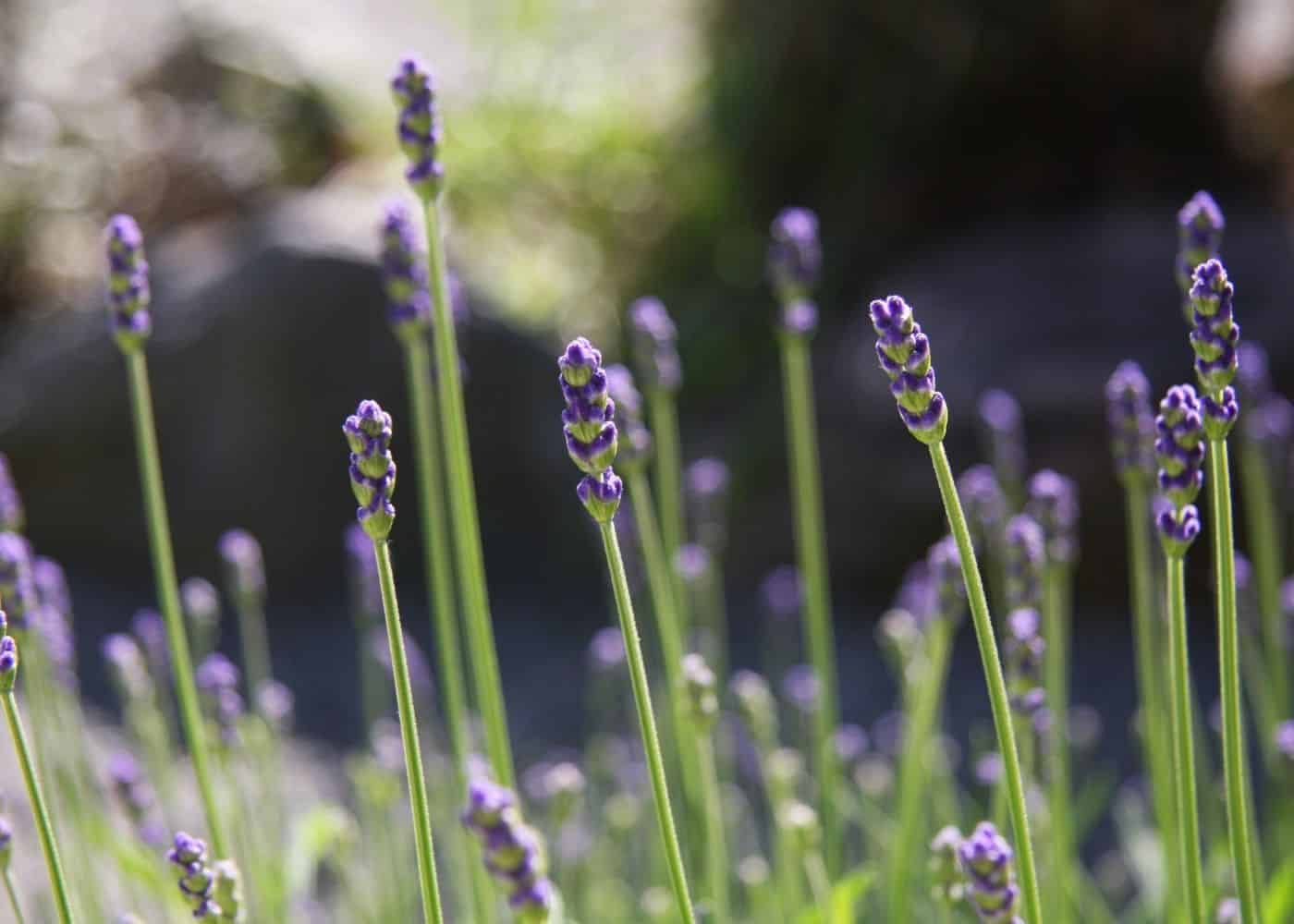
Climate requirements for growing English lavender
English lavender can be grown in climate hardiness zones 5-9. English lavender tends to be much more cold-hardy than other popular types like French lavender and Spanish lavender.
Lavender also requires dry growing seasons to thrive. The plants grow well in areas with wet winters and dry summers. English lavender grows naturally in high-altitude mountainous areas of France (like the Pyrenees), where summer humidity is low and soil is dry.
“Lavandula angustifolia and L. x intermedia cultivars are reasonably tolerant of cold temperatures, winds, rain and snow providing they have good drainage.”
Lavender: The Grower’s Guide, by Virginia McNaughton
Fertilizing English lavender plants
English lavender plants do require added nutrients in situations where the soil is poor. Start by applying a 1″ thick layer of homemade compost as an organic mulch over the surface of the soil. The mulch acts to keep weeds down and keep soil temperatures and moisture levels more consistent while also providing a slow release of naturally sourced plant nutrients.
There are also some excellent commercially available fertilizer products that can boost available nutrients for English lavender plants. Most are slow-release organic products formulated for long-lived flowering plants.
Lavender plants can be fed with fertilizer in the spring and again in late summer after flowering has finished. Follow the instructions on the specific fertilizer product for application details.
Garden lime is another very common soil amendment for English lavender. These plants are native to limestone-derived soils and are quite lime-loving. While lavenders generally are somewhat tolerant of acid soil, English lavender is less so and often benefits from applying garden lime. Garden lime can be worked into the soil before planting or applied in the spring or autumn.
Pruning English lavender
English lavender plants are generally pruned quite hard to keep the plants growing vigorously in a nice compact shape. Young English lavender plants are typically pruned in the plant nursery and should be pruned hard each year for the duration of their lifespan.
English lavender plants can be pruned after flowering and/or in early autumn prior to frosty weather. English lavender plants grown together as a low formal hedge are sometimes also pruned along the sides in the spring, particularly if planted along a pathway.
To prune English lavender after flowering or in early autumn, cut the entire plant back by 1/3 to 1/2 of its size. For instance, if most stems with leaves are about a foot long, they can be cut back to 6″-8″ long each. Remove any stems that are dead, dying, diseased, or damaged. These stems can be removed right down to the base of the plant.
English lavender plants that have not been pruned hard annually tend to develop woody centers that are difficult to shape in future years. Gardeners who prefer lower-maintenance plants may consider planting French lavender instead of English lavender, as French lavender requires much less pruning.
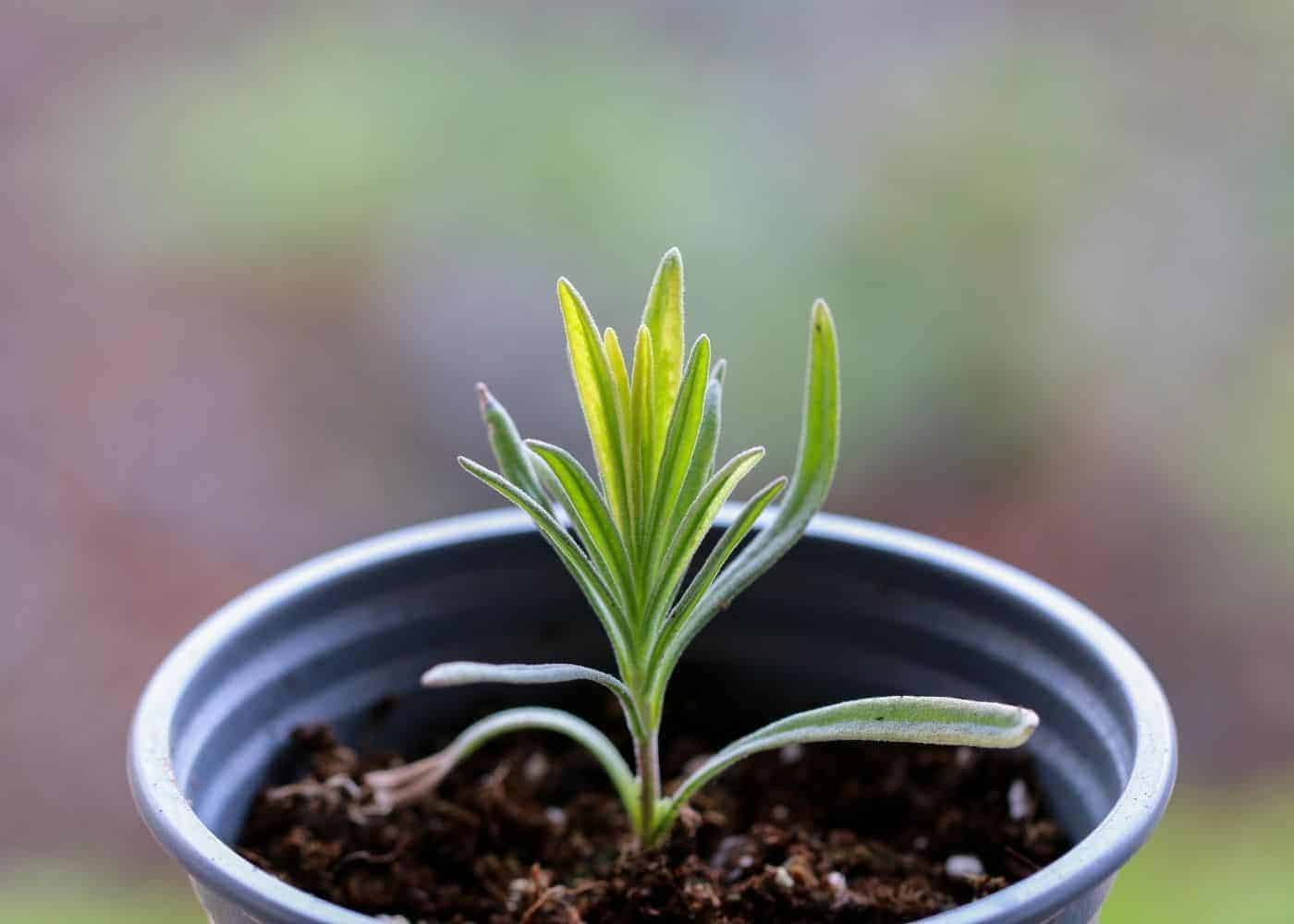
Propagating English lavender
English lavender is propagated by taking cuttings off a mother plant and rooting them to create clone plants. Short bits of stems are placed in a moist growing medium until they develop roots.
In the spring, trim softwood cuttings about 3″-4″ long off an established plant for propagation. Remove leaves off the bottom half of the stem and dip the stem in rooting hormone. Place in free-draining, moist growing medium. Softwood or semi-hardwood cuttings can also be taken in the fall and rooted indoors or in a cold frame over winter. Observe cuttings regularly for signs of new growth.
English lavender can also be grown from lavender seeds. Lavender seeds can be tricky to germinate, and purchasing healthy clone plants from a local nursery is generally easier. Seed-grown English lavender is also quite variable in terms of the resulting plants’ size, shape, and flowering form.
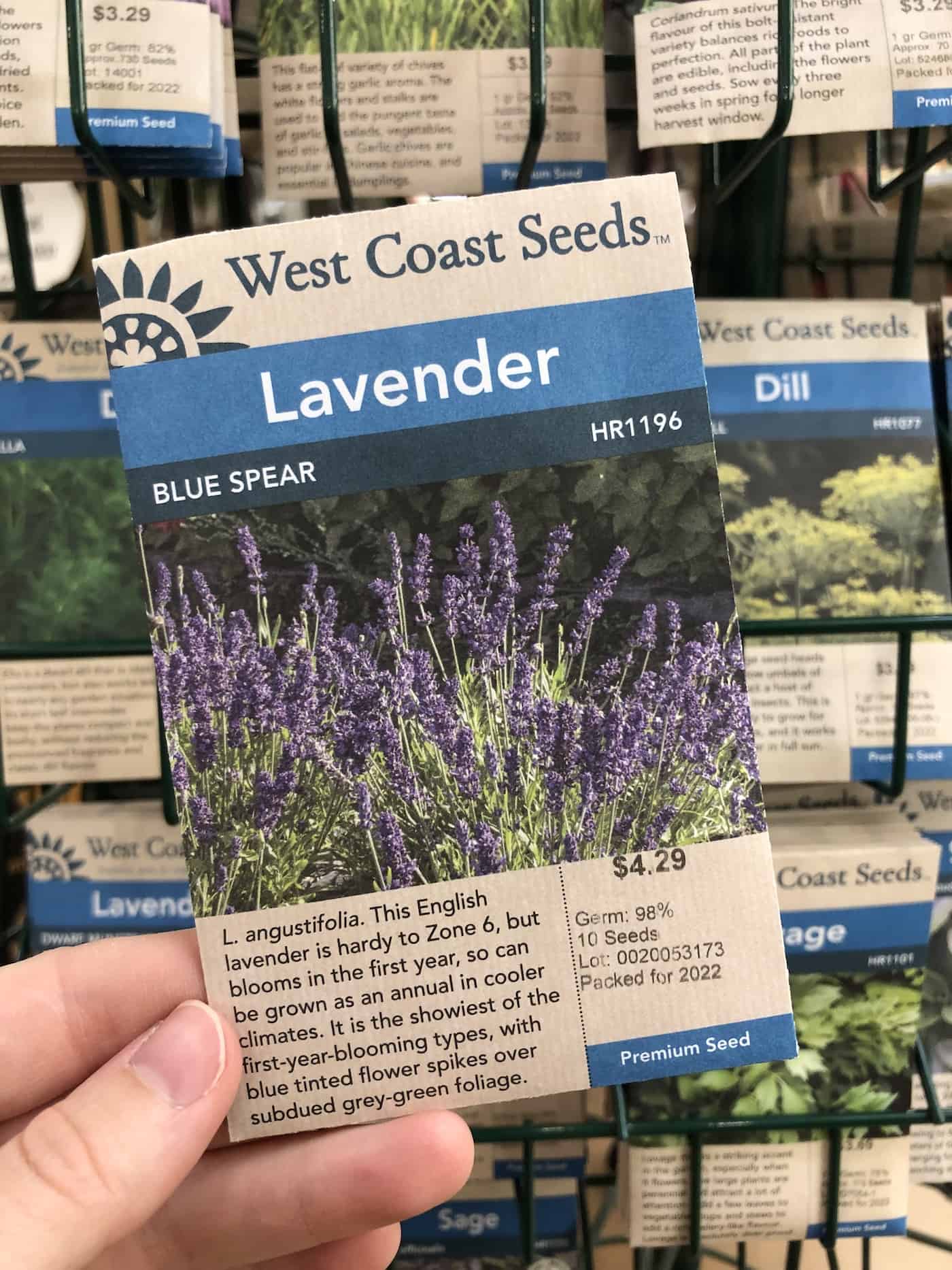
Harvesting English lavender
English lavender flowers are harvested for use in essential oil production, cooking, potpourri sachets, perfume, and other useful applications for the beautiful scent. Lavender is usually harvested in the morning once the dew has dried but before the temperature becomes too hot.
When whole spikes are to be dried, the lavender is generally harvested in early summer when only the first two flowers have bloomed. The majority of the flowers that have not yet opened will dry on the spike, leading to a beautiful spire of dried, fragrant flowers. Lavender harvested as the first flowers are opening can also be used in fresh floral bouquets and arrangements.
Lavender harvested with a significant number of flowers opened can be used for lavender sachets or potpourri. It tends to fall off the stem but is just as lovely in terms of scent.
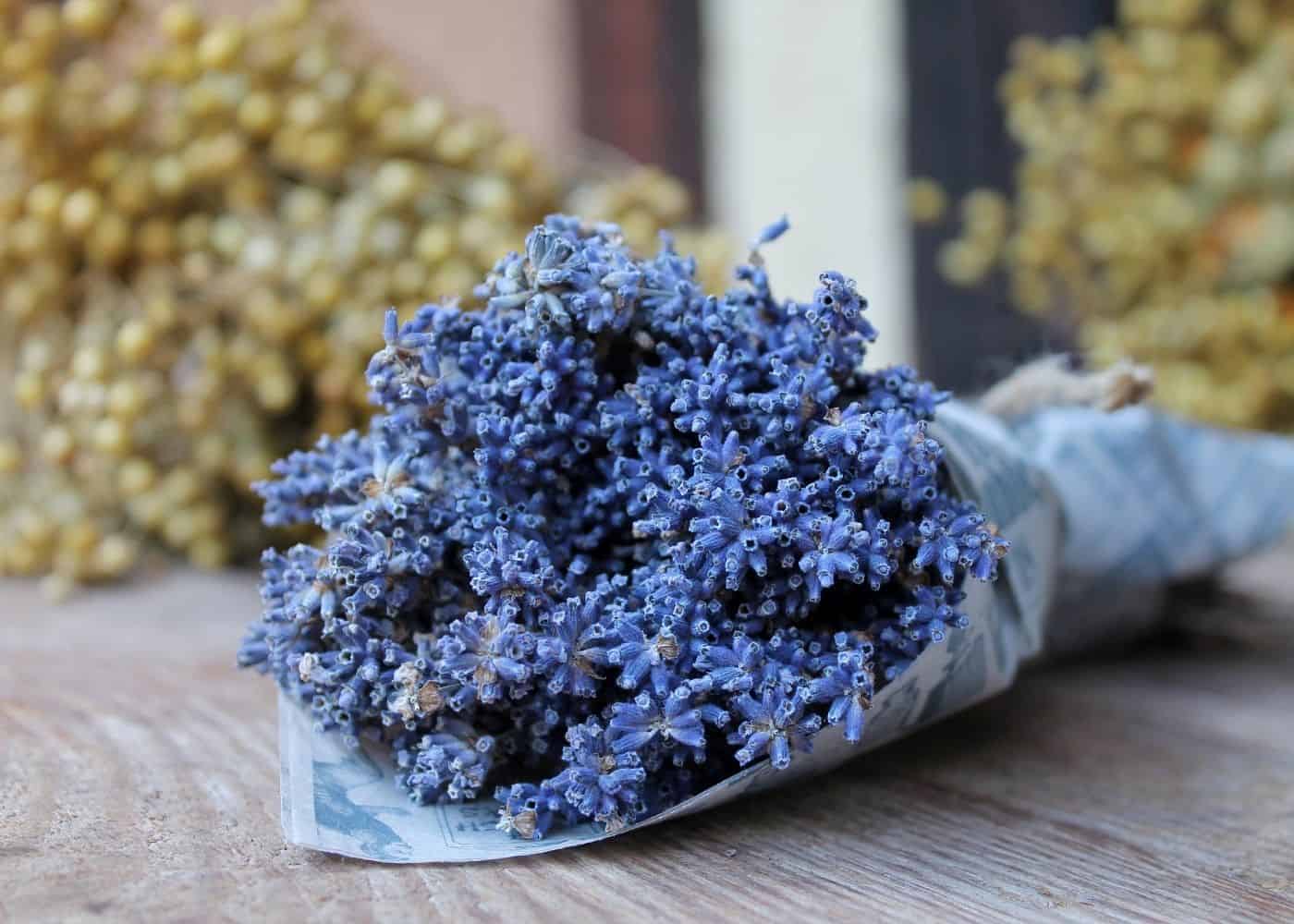
Common plant diseases affecting English lavender
While English lavender plants are generally quite hardy, there are several fungal, bacterial, and viral diseases that can affect them. Disease is most common in rainy, humid climates.
Fungal diseases can occur in English Lavender plants grown in areas with high rainfall and/or frequent overhead watering. Root rot typically occurs when the soil does not drain excess water. Take care to ensure soil is draining well and that air is circulating around the base of the plant.
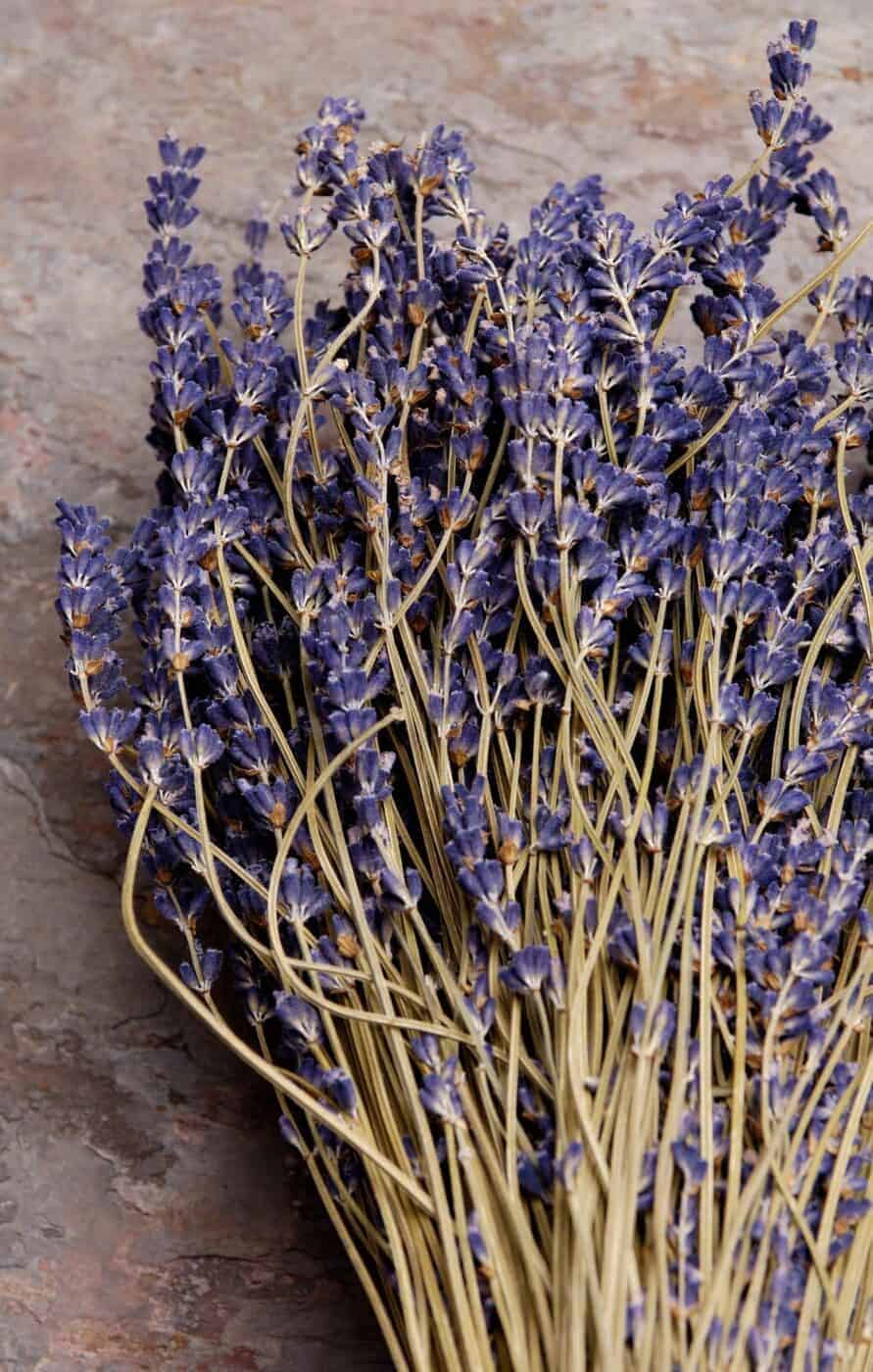
Common garden pests affecting English lavender
Garden pests such as aphids sometimes attack English lavender plants. These bugs can generally be sprayed off the plant with a sharp stream of water but may require an organic spray once the pests have become established on the plant(s).
Mammals rarely attack English lavender due to its strong scent. Deer generally avoid lavender completely, especially if the plant has flowers on it. Rabbits and other smaller burrowing mammals may attack young plants. Rabbits tend to dig around the roots rather than eat the foliage or flowers.


